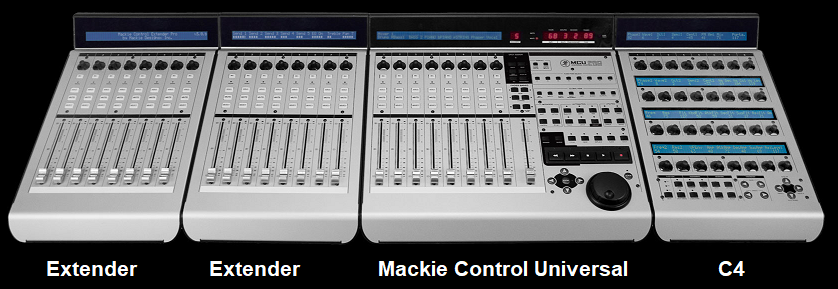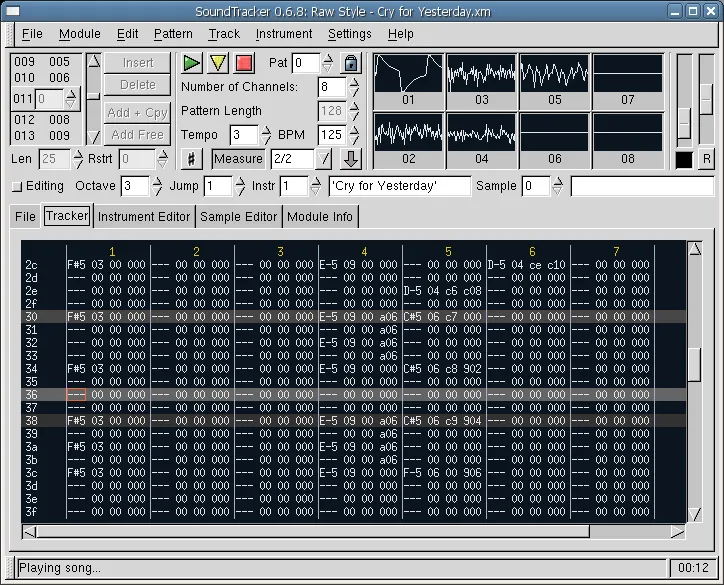-
Posts
7,120 -
Joined
-
Last visited
-
Days Won
39
Everything posted by msmcleod
-

Korg Nano Kontrol 2 Control Surface
msmcleod replied to Jack Stoner's topic in Instruments & Effects
Mackie produced 3 control surface products as part of the MCU range: - The Mackie Control Universal [MCU] ( MackieControl ) - The Mackie Extender ( Mackie Control XT ) - The Mackie C4 ( Mackie Control C4 ) The nanoKONTROL is designed to emulate the MCU - it won't work as a C4 as the C4 is a completely different device. Also, you shouldn't need to use the MMcL version of the Mackie Control any more (unless you want to run several independent Mackie Controllers*) - all my changes are now in the official Cakewalk version. *By independent I mean controllers that are not running as an integrated group - the ones in the picture above are NOT running independently, but as a group. -

Kontakt crashes always(solved mysteriously)
msmcleod replied to kakku's topic in Instruments & Effects
This is where NI has put all its VST DLL's on my machine: C:\Program Files\Native Instruments\VSTPlugins 64 bit\ C:\Program Files\Native Instruments\VSTPlugins 32 bit\ ... so just add those two paths. -
If you're using the delete key, it will delete whatever is selected, but as you say... if you've missed the envelope node, it's the effect that is selected. The safest way to delete automation nodes is to right click->delete node from the context menu. This is the only method I use personally.
- 8 replies
-
- automation
- bug
-
(and 2 more)
Tagged with:
-
That link seems to have downloads for all their products. Some have been updated, some haven't - so check that (a) you own the product, and (b) you've not already got that version installed. I eagerly starting downloading them all before I realised I hadn't bought stuff like Ignite... and everything other than MiniGrand, Velvet & Hybrid were already at the latest version.
-
This is the link PluginBoutique sent me to: https://support.pluginboutique.com/hc/en-gb/articles/360007375497-AIR-Music-Technology-Download-Area
-
As there are no sales figures to monitor, the only way of knowing the active user count (and how many people are using the most up to date version) is to do so via BandLab assistant.
-
A couple of things to check: 1. When you play do you get activity In the MIDI tray icon ? (the red lights should light up). If there's no activity, then this means Cakewalk isn't receiving any MIDI and the problem lies outside of Cakewalk. 2. Check your Control Surface preferences to see if any control surface is using that MIDI port. If it is, either remove the control surface or change it to another port.
-
If you're using MIDI over bluetooth you need to use UWP as your MIDI driver mode. Go to Preferences->MIDI->Playback and Recording and set your mode to UWP. Note that you can't change the driver mode while a project is loaded, so open preferences as soon as you open Cakewalk.
-
As of 2020.04. the pro channel tabs have been replaced with icons. If you're getting text, then it's probably because you're using a custom theme. This post details the elements that need changing:
-

UTF-8 character encoding support for text fields [Solved]
msmcleod replied to GreenLight's topic in Feedback Loop
They might if the character set chosen is a single-byte character set. AFAIK though, Windows 10 is all Unicode, so language settings just select your preferred code page. -

UTF-8 character encoding support for text fields [Solved]
msmcleod replied to GreenLight's topic in Feedback Loop
Maybe, but I can't see anything we've done since then that would suddenly cause this to work. -
Ok, it looks like the problem @Milton Sica had was that his VST scan path included C:\Program Files\Cakewalk - so it was trying to scan Cakewalk's program DLL's while the program was using them. It's really important to: 1. Only include directories that hold only VST DLL's in your scan path Unfortunately there's no way to tell if a DLL file is a VST2 DLL or not, except by Cakewalk loading it and attempting to bind to the VST2 methods. DLL's that are not VST's do a variety of things when loaded: some expect other DLL's to be in memory at the time, or applications to be running and will crash if they're not there. There's absolutely nothing Cakewalk can do about this. That is why it's important to only provide paths containing only VST DLL's. 2. Don't include a directory twice in your scan path Including a directory more than once could result in duplicate entries of a plugin. 3. Always use the Scan within Preferences/VST Settings and have the Sandbox Scan checked. Do not use the Plugin Manager for scanning. The plugin manager is no longer recommended for scanning, as it can only scan in a single thread. This causes the application to lock up should it find a plugin it can't scan. Its only purpose now is to facilitate enabling/disabling plugins and to configure plugin layouts. The Sandbox Scan uses a separate thread for scanning each plugin, which means if one fails, the others will continue to scan.
-
I'm running an upgrade from Windows 7, but I've never seen that message. In saying that, I'm fairly up to date ( 1909 ) - what version of Windows 10 are you running?
-
Interesting... I guess at one point everyone decided that it was easier to keep time in the x-axis. It's not always been that way though, back in the old Amiga tracker days, tracks were on the X axis and time was on the Y axis:
-
Ok, maybe this isn't the issue then... I notice that I get the same version number too on my Windows 7 boot. @Milton Sica - could this be your anti-virus software ?
-

[SOLVED] Auto Crossfade not working like I expect
msmcleod replied to Christian Jones's topic in Cakewalk by BandLab
The reason the muted clips are included is to facilitate fast comping, enabling you to mute/unmute various parts of your comp knowing that the crossfade position is consistent across all lanes. If you want to move the position of the clip while keeping the cross fades, you could use the slip editing tool: NOTE - you want to make sure snap is off when doing this. -
For Duplicate Clip, this has been fixed for the next release. It will retain the original selection size and not crop to the last note.
-

UTF-8 character encoding support for text fields [Solved]
msmcleod replied to GreenLight's topic in Feedback Loop
This may also be a Windows 7 vs Windows 10 thing - are you running Windows 10 ? -
I've sent you a copy of the English one. My suspicion is that the portuguese version wasn't built properly, and an older version was packaged, but we'll need to look into this further to confirm.
-
I'l PM you
-
Thanks @Milton Sica - we'll look into why the version number is different for you. Can you also check that the registry entry (steps 1 & 2) is pointing to this file ?
-

UTF-8 character encoding support for text fields [Solved]
msmcleod replied to GreenLight's topic in Feedback Loop
@GreenLight - what version of CbB / SONAR are you using? I'm not seeing that issue with the latest CbB: -
Slightly OT, but I find the M-Audio keystation mini 32 perfect for keyswitches - it's the same length as a standard computer keyboard, and the action is surprisingly good for such a small keyboard: I've put extra stick-on rubber feet at the bottom so it fits nicely over my laptop keyboard or trackpad without hitting anything, so I can literally use it on my lap while on the go. The only thing I'd wish for on this is a small trackball on the top right & mouse buttons on bottom right... The last controller I bought with a decent action was the EMU X-Board, but even those only went up to 61 keys. My Samson Graphite 49 feels good, but the velocity action is really hit & miss making it practically useless. The CME's were very good and did 76 keys - but they were huge and pricey. TBH If you're just looking for a decent 76 key keyboard, I'd look at a 2nd hand Roland synth like the XP80 (even the bottom of the range 61 key XP10 which was a sound canvas with keyboard had a GREAT keyboard)... or get a 2nd hand CME.
-

[SOLVED] Auto Crossfade not working like I expect
msmcleod replied to Christian Jones's topic in Cakewalk by BandLab
Looks to me like you're using the wrong tool to adjust the crossfade positions. In your video you're using the crop tool, and the results look as I'd expect. Better to use the crossfade move tool. This is the default tool when hovering over the crossfade in take lanes. In the comp clip however, hold down shift:








